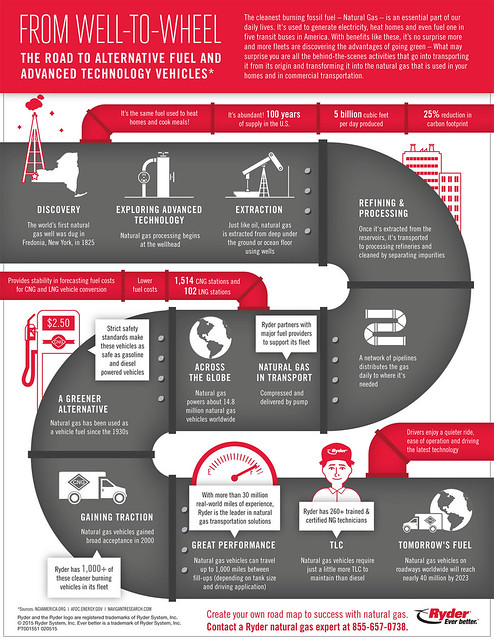Answer: When discussing emissions, it is important to use the appropriate terms, know the context, and present a complete picture. The U.S. Department of Energy (DOE) has a number of tools and resources available to understand and calculate the emissions benefits of alternative fuels and vehicles (see below). But first, let's get back to the basics.
Criteria Pollutants versus Non-Criteria Pollutants
Vehicles emit both criteria pollutants and non-criteria pollutants. In compliance with the Clean Air Act, the U.S. Environmental Protection Agency (EPA) classifies six common pollutants as criteria pollutants based on certain health and environmental standards:
- Carbon monoxide (CO)
- Oxides of nitrogen (NOx)
- Particulate matter (PM)
- Ozone
- Oxides of sulfur (SOx)
- Lead
For more information about criteria pollutant emissions, refer to the EPA Six Common Air Pollutants page.
Greenhouse gases (GHGs), including carbon dioxide, are considered non-criteria pollutants. The following also fall into this category:
- Volatile organic compounds (VOCs)
- Total hydrocarbons (HCs)
- Methane
- Air toxics
- Other organic gases
For more information about GHG emissions, refer to the EPA Overview of GHGs page.
Measuring Emissions
You can evaluate vehicle emissions through a number of lenses. Considering emissions in different contexts can present a more impactful picture, depending on the stakeholder.
- Life cycle emissions: Emissions generated through all stages of a fuel's life, including raw material extraction, processing, manufacturing, distribution, use, and disposal or recycling. Life cycle emissions are typically considered when evaluating "global pollutants," or pollutants that have an impact regardless of where they are emitted. For example, GHGs are usually measured on a life cycle basis.
- Tailpipe emissions: Emissions directly from the exhaust of the vehicle. Tailpipe emissions are considered when looking at "local pollutants," or pollutants that impact air quality directly where they are emitted. For example, criteria pollutants, such as PM, are typically measured as tailpipe emissions.
- Evaporative emissions: Emissions from the vehicle's fuel system and during the fueling process, not including the combustion of the fuel. Evaporative emissions are also considered when evaluating "local pollutants."
When quantifying or presenting emissions benefits for a particular project, make sure to ask yourself which type of information would have the most impact. For example, an air quality organization (e.g., your local American Lung Association chapter) would like to hear about tailpipe and evaporative emissions. A national company focused on their footprint and impact on climate change would want to hear about life cycle emissions.
Emissions Standards
EPA sets tailpipe and evaporative emissions standards for new vehicles.
- EPA's Tier 3 Vehicle Emission and Fuel Standards Program page covers the regulations for light-duty, medium-duty, and some heavy-duty vehicles that will be phased in beginning in 2017.
- For information about federal GHG emissions standards, which are implemented in conjunction with the National Highway Traffic Safety Administration's fuel economy standards, visit EPA's Regulations & Standards page.
The California Air Resources Board (CARB) enforces vehicle emissions standards for California that are more stringent than federal EPA standards. Vehicles may be certified as compliant with federal standards, CARB standards, or both. For information on CARB's emissions standards, visit the Mobile Source Program Portal. Several other states have chosen to comply with certain CARB standards as well, so read up on the requirements in your state. See the AFDC Laws & Incentives website for more information.
Other Considerations
It is important to take into account the "full package" when looking at alternative fuel vehicle (AFV) emissions; again, try to anticipate questions from the audience to tease out the most relevant information. For example, keep the following in mind:
- While a fuel may not offer large reductions in one pollutant, it may offer significant benefits in other pollutants.
- Emissions information should also be presented in the larger context of federal and state regulations.
- Be sure you are comparing "apples to apples" when looking at AFV and conventional vehicle emissions. For instance, look at which pollutants are covered, and whether tailpipe, life cycle, and/or evaporative emissions are being measured. Every study is different, so it can be very difficult to compare outcomes of one to outcomes of another.
Emissions Analysis Tools
With all of that in mind, the following tools can be used to calculate fleet emissions and plan for overall emission reductions:
- AFDC Petroleum Reduction Planning Tool
- Argonne National Laboratory's (ANL) Alternative Fuel Life-Cycle Environmental and Economic Transportation (AFLEET) Tool
- ANL's Greenhouse Gases, Regulated Emissions, and Energy use in Transportation (GREET) Model
- Compressed Natural Gas (CNG) Vehicle and Infrastructure Cash-Flow Evaluation (VICE) Model 2.0
Clean Cities Technical Response Service Team
technicalresponse@icfi.com
800-254-6735

